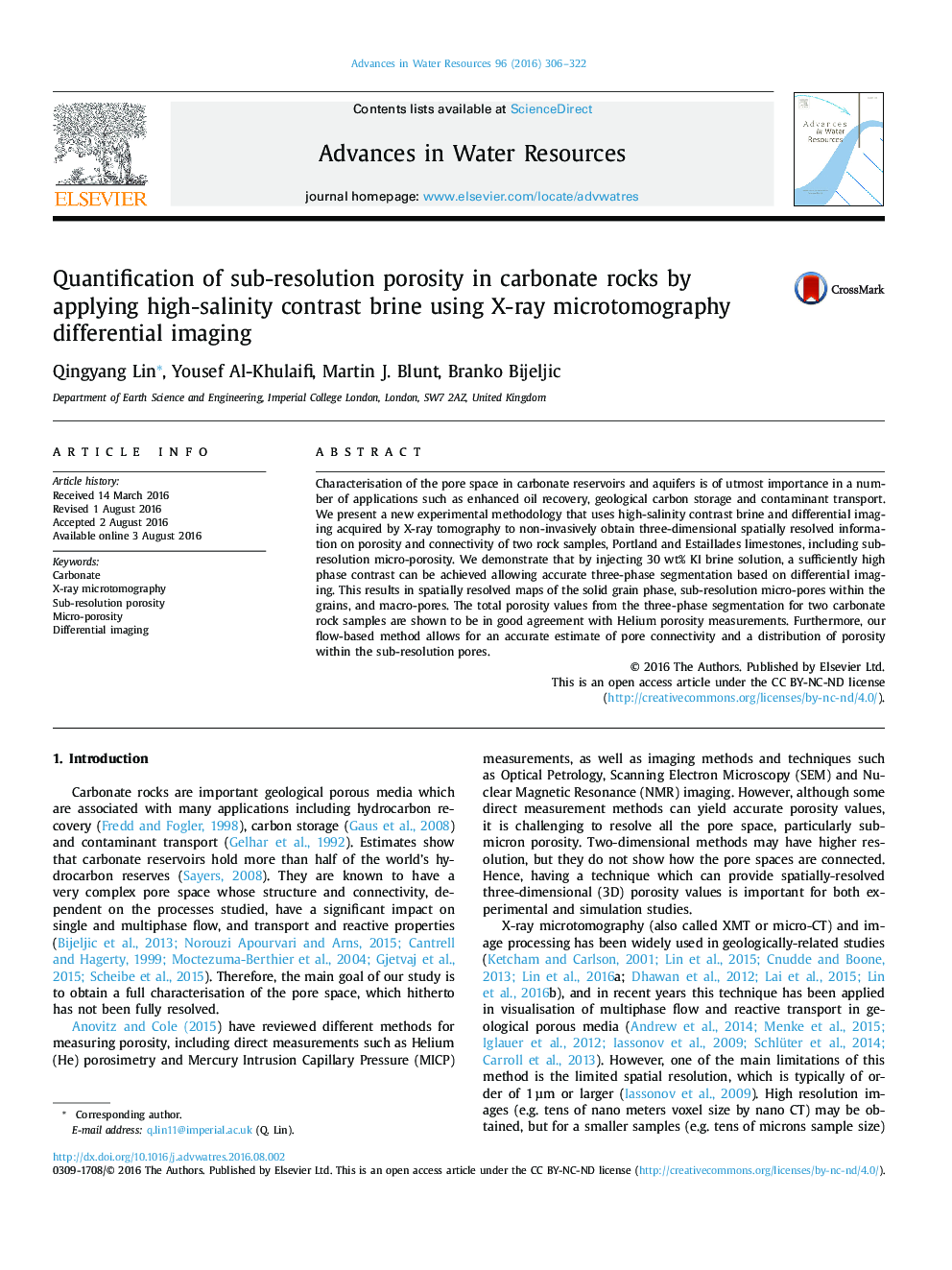| Article ID | Journal | Published Year | Pages | File Type |
|---|---|---|---|---|
| 6380529 | Advances in Water Resources | 2016 | 17 Pages |
Abstract
Characterisation of the pore space in carbonate reservoirs and aquifers is of utmost importance in a number of applications such as enhanced oil recovery, geological carbon storage and contaminant transport. We present a new experimental methodology that uses high-salinity contrast brine and differential imaging acquired by X-ray tomography to non-invasively obtain three-dimensional spatially resolved information on porosity and connectivity of two rock samples, Portland and Estaillades limestones, including sub-resolution micro-porosity. We demonstrate that by injecting 30 wt% KI brine solution, a sufficiently high phase contrast can be achieved allowing accurate three-phase segmentation based on differential imaging. This results in spatially resolved maps of the solid grain phase, sub-resolution micro-pores within the grains, and macro-pores. The total porosity values from the three-phase segmentation for two carbonate rock samples are shown to be in good agreement with Helium porosity measurements. Furthermore, our flow-based method allows for an accurate estimate of pore connectivity and a distribution of porosity within the sub-resolution pores.
Related Topics
Physical Sciences and Engineering
Earth and Planetary Sciences
Earth-Surface Processes
Authors
Qingyang Lin, Yousef Al-Khulaifi, Martin J. Blunt, Branko Bijeljic,
